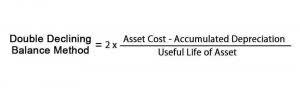
These opening balance equity articles and related content is not a substitute for the guidance of a lawyer (and especially for questions related to GDPR), tax, or compliance professional. When in doubt, please consult your lawyer tax, or compliance professional for counsel. Sage makes no representations or warranties of any kind, express or implied, about the completeness or accuracy of this article and related content. SumUp is a one-stop-shop for all of your business needs – from easy, compliant invoicing to accepting payments.
- Understanding opening balances is essential for businesses of all sizes and industries.
- If you’ve just started a new business, or it’s your first time managing the accounts, you’re probably discovering a lot of unfamiliar terms.
- This period could be a day, a week, a month, a quarter or a year, depending on how the business manages its finances.
- This can result in misleading financial assessments and potentially wrong investment decisions.
- For example- If the opening balance of machinery is shown on the debit side of the ledger account then the closing balance of the machinery will be shown on the credit side to balance the ledger account.
- Failing to document the components and calculations involved in deriving the opening balance can lead to ambiguity and lack of transparency.
Methods for calculating rate of return
You may choose to have shorter financial periods in order to keep an even closer eye on your business. For this reason, you may want to introduce opening and closing balances on a monthly basis, quarterly or six-monthly basis. From a forecasting perspective, opening balances act as a foundation for projecting future financial outcomes. By considering the opening balances alongside other factors such as market conditions, industry trends, and internal goals, businesses can develop realistic financial forecasts. For example, if a retail business plans to expand its operations, it can analyze its opening balances to determine the funds available for investment and estimate the potential return on investment.

Challenges and Common Issues with Opening Balances
You will then transfer that closing balance to next month’s balance sheet, which will become the opening balance for that period. Balance sheets are documents used to track a company’s assets and liabilities, or, in simpler terms, what it owns and what it owes. When a company first begins trading, every asset of the company must be valued and recorded. Vehicles, premises, hardware, office furniture, it all has to be included in the opening balance sheet as “assets” of the company. These may also be coupled bookkeeping for cleaning business with “liabilities”, or debts, if equipment has been purchased through bank loans or investments from other parties. In the simplest of terms, a company’s opening balance refers to the funds in its account at the start of a new financial period.
Can I Pay my Private Medical Insurance Through my Limited Company?
For instance, if a company consistently starts each year with a high level of debt, it may indicate a need to reevaluate their borrowing practices or explore strategies to reduce liabilities. On the other hand, if the opening balances show a steady increase in retained earnings, it signifies trial balance the company’s ability to generate profits and reinvest in its growth. Accurate financial records are not just good practice; they’re often legally required.

Opening Balances in Action
- But for an opening balance figure to be accurate, every transaction (whether that’s earnings or outgoings) has to be accurately recorded, either in your accounting software or your cash book.
- By meticulously analyzing opening balances, accountants can ensure the integrity of financial statements, which is crucial for maintaining transparency and complying with legal and regulatory requirements.
- You might hear it referred to as the amount ‘brought forward’ (BF) from the previous period.
- This will be the first entry in a ledger account at the beginning of an accounting period.
- The opening balance sets the foundation for all subsequent financial transactions and forms the basis for accurate accounting records.
- It’s the first entry in the accounts, either when a company is first starting up its accounts or after a year-end.
- The Customer Balance Summary and Customer Balance Detail reports both show you how much each customer owes you for the specified date range, as of the date that the report is run.
Opening balances play a critical role in setting the stage for financial transactions and business operations. However, ensuring an accurate and well-structured opening balance is often easier said than done. Several challenges and common issues arise during this process, necessitating careful consideration and attention. It’s the starting point, the foundation upon which all future financial transactions and decisions will be built. In the grand scheme of things, an opening balance may seem insignificant, but its implications are far-reaching.
- It represents the brought forward or opening amount of an asset, liability, or equity item from the preceding financial year.
- Currently Accounting Manager at Mooncard, Yannick Agbohoun was one of the company’s first employees.
- As you indicated, the line for A/R in the Balance Sheet, matches the A/R Aging Summary.
- From a forecasting perspective, opening balances act as a foundation for projecting future financial outcomes.
- The closing balance (or) ending balance is placed on either side of the opening balance.
- Calculating an opening balance can also be useful when a business is analysing its performance, or to answer questions from external sources such as investors or the tax authorities.
By grasping the concept and significance of opening balances, business owners and accountants alike can navigate the complex world of accounting with confidence and precision. In the ledger, balance b/d means opening (or) the beginning balance of an account. Balance b/d refers to that balance that is brought down (or) forward to the current accounting period from the previous accounting period. In simple terms, the ending (or) closing balance at the end of the month becomes the opening balance for the next month. If you switch from one accounting system to another, your opening and closing balances are key to starting your new records accurately. If you’re using accounting software or working directly with an accountant, you might see the abbreviations B/D (brought down) or B/F (brought forward) alongside your opening balance.

- Knowing what the opening and closing balances of your business are will help to establish exactly how well things are going.
- While the opening and closing balance are important, it’s the opening balance that will ensure that your accounts are always accurate.
- For example, the year-end accounts for your business won’t just show your annual profits for the year.
- Without meticulous attention to detail, discrepancies can creep in, leading to erroneous reporting and financial analyses.
- From “fiscal years” to “working capital”, from “accrual accounting” to “operating cash flow”, it’s easy to get lost in this terminological jungle.
- So, as you begin your financial endeavors, remember to set the stage right with a precise and carefully calculated opening balance.
In other words, the balance c/d of one year becomes the balance b/d of the next. A balance is described as “brought down” (b/d) when it is carried forward from a previous accounting period. In other words, it is synonymous with the term “opening balance”, as we explained it above.